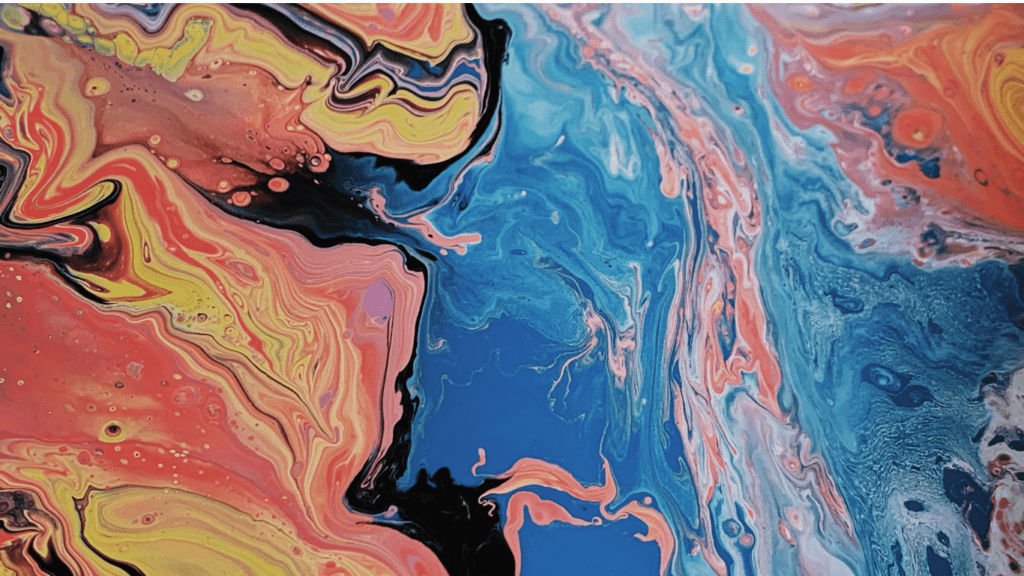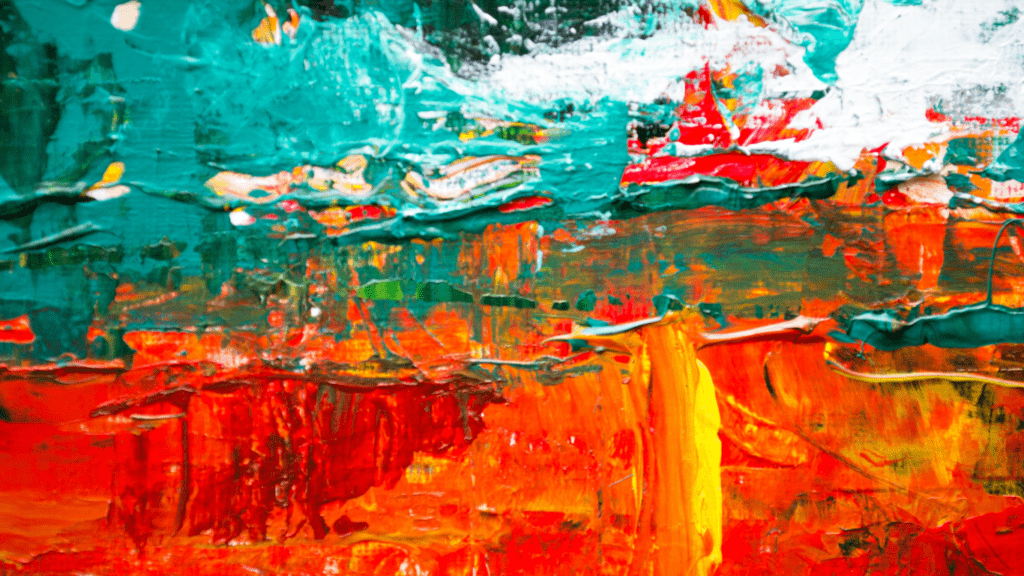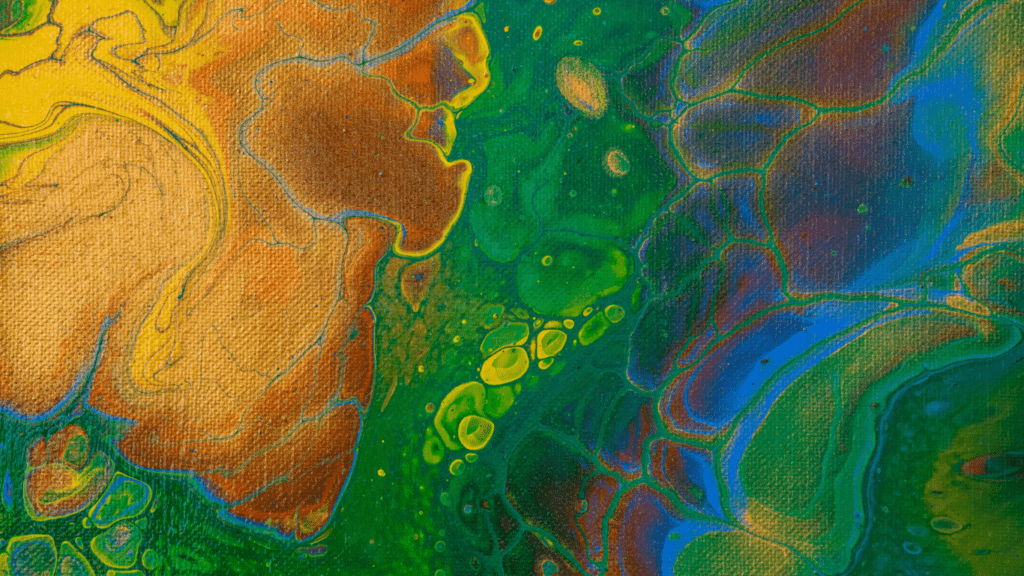Origins Of Abstract Expressionism
Abstract Expressionism emerged in the 1940s and 1950s, blending spontaneity and raw emotional expression with innovative techniques.
Influence Of Surrealism And Cubism
Surrealism, led by figures like André Breton, introduced the importance of the subconscious in creating art. Artists used automatic drawing to tap into their inner psyche. This influenced Abstract Expressionists like Jackson Pollock, who embraced freeform techniques.
Cubism, pioneered by Pablo Picasso and Georges Braque, broke objects into geometric shapes. This deconstruction informed Abstract Expressionists, who moved away from representational art. They reimagined form and space, focusing on emotional intensity.
Impact Of World War II
World War II caused a significant artistic migration, bringing European artists to the United States. This influx introduced American artists to avant-garde ideas. Established artists like Hans Hofmann and émigré scholars influenced the burgeoning movement.
The war’s devastation led to a collective existential reflection. Abstract Expressionists responded with works reflecting chaos, anger, and hope. They captured the spectrum of human emotion, creating a powerful new artistic language.
Key Characteristics Of Abstract Expressionism

Abstract Expressionism stands out due to several defining traits that contribute to its powerful impact.
Emphasis On Spontaneity And Intuition
Abstract Expressionists prioritize spontaneity and intuition in their creative process. Artists often apply paint quickly and without premeditation, capturing raw emotions on canvas. Jackson Pollock’s “drip” technique exemplifies this approach, where paint is poured or dripped directly onto the canvas.
Large Canvas Format
Many Abstract Expressionist works are created on large canvases, amplifying their emotional impact. The expansive format allows artists to convey a sense of grandeur and urgency. For example, Mark Rothko’s large color fields envelop viewers, creating an immersive experience.
Focus On Color And Texture
Color and texture play crucial roles in Abstract Expressionism, serving as primary means of expression. Artists like Willem de Kooning use vibrant hues and thick layers of paint to evoke intense feelings. The tactile quality of the paint adds depth, inviting viewers to connect with the work on a sensory level.
Prominent Artists And Their Contributions
Abstract Expressionism’s power comes from the unique contributions of its leading artists. Each artist brought their own style and perspective, shaping this influential movement.
Jackson Pollock
Jackson Pollock revolutionized art with his drip painting technique. He abandoned traditional easel painting for a more physical approach, laying canvases on the floor and pouring paint directly from cans or flicking it from brushes and sticks. This method, exemplified in works like “No. 5, 1948,” captured raw emotion and energy, creating a sense of movement and chaos. Pollock’s innovative techniques and intense focus on the process made his art a cornerstone of Abstract Expressionism.
Mark Rothko
Mark Rothko’s contributions pivoted on color fields and emotional depth. His large-scale works featured soft-edged rectangles of color that seem to float on the canvas. Paintings like “No. 61 (Rust and Blue)” invite viewers into a contemplative space, evoking deep emotional responses. Rothko’s approach emphasized the power of color and form in communicating profound human emotions, setting his work apart within the movement. His use of color as the primary expressive element added a spiritual dimension to Abstract Expressionism.
Willem de Kooning
Willem de Kooning’s dynamic style combined figuration and abstraction. His paintings like “Woman I” blend aggressive brushstrokes with fragmented forms, creating a tension between chaos and structure. De Kooning’s emphasis on spontaneity and the physical act of painting mirrored Pollock’s but maintained a stronger connection to recognizable forms. This blend of abstract and figurative elements expanded the boundaries of Abstract Expressionism, highlighting the movement’s versatility. His work demonstrated the emotional intensity that can be achieved through both abstract and representational techniques.
Emotional Impact On Viewers
Abstract Expressionism profoundly affects viewers, evoking intense emotions and fostering personal connections. This powerful impact stems from the movement’s emphasis on spontaneity and raw expression.
Evoking Deep Emotions
Abstract Expressionism taps into deep-seated emotions by using bold colors, dynamic brushstrokes, and unrestrained forms. Artists like Mark Rothko, with his color field paintings, create immersive experiences that elicit feelings of awe and contemplation. In contrast, Jackson Pollock’s chaotic drip paintings induce a sense of energy and movement. The absence of clear subject matter allows viewers to project their own emotions onto the artwork, creating a deeply personal and emotional experience.
Personal Interpretations And Connections
- Abstract Expressionism invites viewers to form unique interpretations and connections.
- Without definitive imagery, viewers engage in a subjective dialogue with the artwork.
- Willem de Kooning’s blend of figuration and abstraction offers a versatile canvas for personal meanings.
- This active engagement fosters a strong sense of connection and ownership, making each interaction with the artwork distinct and powerful.
Cultural And Historical Impact
Abstract Expressionism left a significant mark on both the art world and society. Its impact can be seen in various modern art movements and in shaping the identity of American art.
Influence On Modern Art Movements
Abstract Expressionism influenced numerous modern art movements. For instance, it paved the way for movements like:
- Color Field Painting
- Minimalism
where artists focused on simplicity and color. Artists such as Helen Frankenthaler and Morris Louis drew inspiration from Abstract Expressionism’s emotive power and expansive use of canvas. It also impacted the development of Pop Art, where artists like Andy Warhol incorporated bold, expressive techniques into their works.
Role In Shaping American Art Identity
The movement played a crucial role in defining American art identity. It marked a shift from European dominance in the art world to American leadership. The works of artists like Pollock, Rothko, and de Kooning established New York as a vital center for contemporary art. Their art reflected the freedom and innovation associated with American culture, making Abstract Expressionism synonymous with American artistic prowess. By breaking away from traditional forms and embracing new techniques, these artists revolutionized how the world perceives American art.





